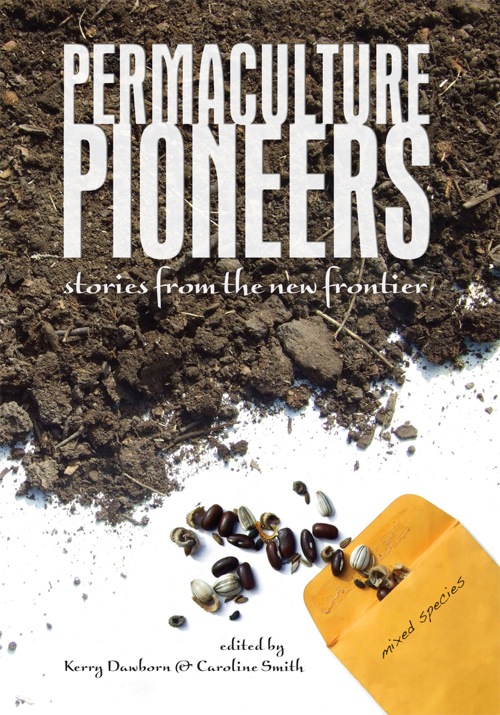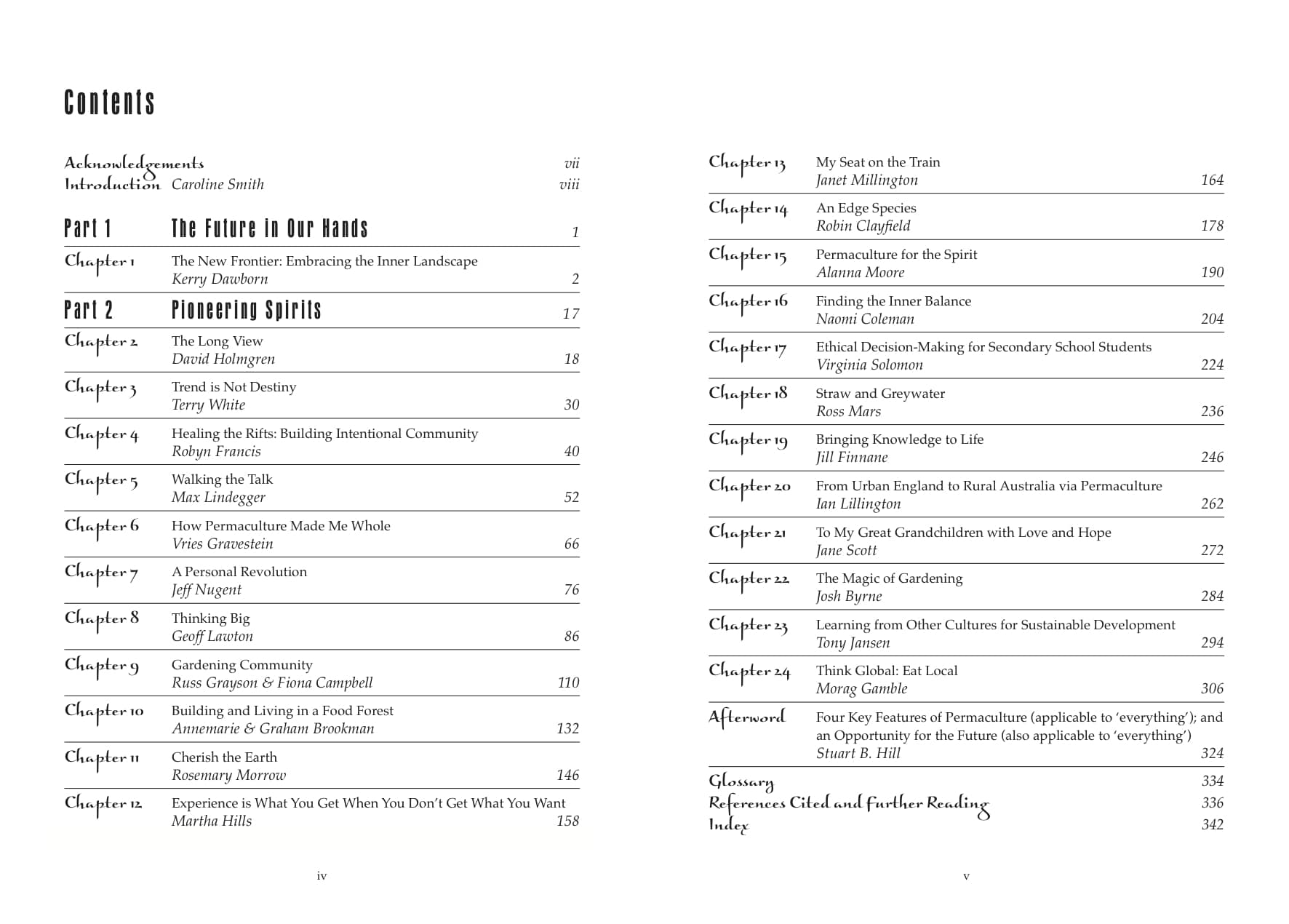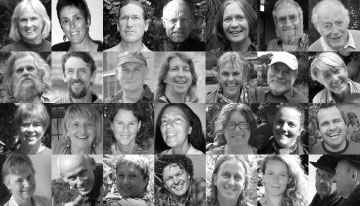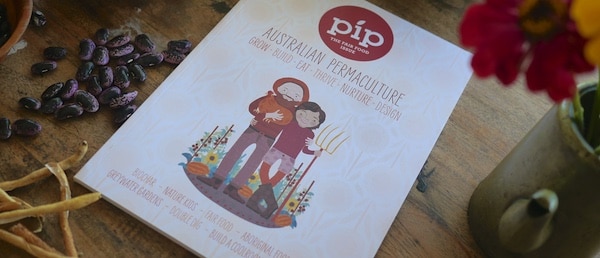Human Permaculture: Communication as Flow part 2 - The Permaculture Research Institute
HUMAN PERMACULTURE: COMMUNICATION AS FLOW PART 2
OCTOBER 8, 2018 BY CHARLOTTE ASHWANDEN & FILED UNDER ALTERNATIVES TO POLITICAL SYSTEMS, COMMUNITY, EDUCATION, GENERAL, PEOPLE SYSTEMS
In part 1 of this article (1), I explored a little how we might use permaculture as a lens through which to visualise communication. By seeing our communication with other humans as an energy flow which could potentially be mapped, we could find efficient and holistic ways to utilise this energy. In this article I will focus on some possible practical applications of this, and how we can communicate in more effective ways to make social permaculture an integrated part of the permaculture we practice in everyday life.
Language Energy
In part 1 (1) I mentioned the possibility of using communication with other people in your chosen system as one of the energy flows which can be mapped using the ‘Sector Analysis’ of the permaculture design process. Since permaculture is generally seen as a design system which is based upon observable phenomena, mapping communication in this way would necessarily require a more subtle touch than, say, that of mapping the wind direction and flow, which you can feel very easily on your skin. However, I believe that it can still be helpful to visualise communication in this way, since it does at least represent a flow, albeit perhaps a less predictable one to those of wind, sunlight and water. The words which flow through the ‘invisible dimension’ (see 2) of air around us cannot be seen, yet their effect can be felt in many profound ways.
How can communication be inefficient?
All of this talk about using communication energy-flows efficiently may sound rather strange. Permaculture design is often focussed upon energy-efficient planning; for the ease of the designer as well as to encourage holistic interaction within the system. Yet communication is just a means of relaying messages; can it really be used in efficient or inefficient ways?
One possible illustration of communication energy-flows being blocked is that of a very common practice in modern society, that of a top-down organisational approach. The communication-flow of such a structure could be visualised as flowing directly from the manager or managers to those lower down in the hierarchy, with little or no reciprocal flow. Such a structure could be seen in some ways as efficient; the flow emanates from one source, and decisions are not confused by input of multiple opinions. However, this efficiency seems to be only truly efficient if all the humans involved have identical opinions, wishes and desires. Since this is almost never the case, we can visualise the communication energy-flows can be seen as flowing straight through the system, much as rainwater flows straight through a flat landscape with poor soil conditions. Ideally in a healthy ecosystem, however, we would want the flow the spread slowly through the landscape, nourishing whatever it touches. In a human landscape, we can imagine ‘slowing, spreading and sinking’ (3, 4) the communication flow in a number of ways.
Regaining reciprocal communication-structures
The above example shows that this concept of communication as flow is not about the particular words you say or who you say them to; though these are important in different ways, what we are looking at here is the invisible structures which surround our communication with each other. Below are two possible alternative structures with a brief definition and possible pros and cons, as well as some other suggestions for changing the structure of how we use that most powerful of technologies, our language.
Communication-flow for agreement: Consensus decision-making
Consensus decision-making is a fairly popular alternative to hierarchical decision-making, which is used by a diverse range of companies and organisations all over the world. As you might guess from the name, it is based on consensus, or mutual agreement.
Consensus decision-making is a very old process probably first developed back in the 16thcentury (5) by the Quakers, a peace-loving sect of the Christian religion (6). Giulio Caperchi offers this concise definition of how it works:
“Consensus decision-making offers a procedure through which participants of an assembly may take decisions collaboratively through deliberation. The decisions taken through this process are not necessarily ones that all individuals support wholeheartedly, but ones that everyone can live with.” (7)
In practice this usually looks like a circular decision-making process where everyone has input into what gets done. No decision can be made until everyone agrees, which means that if even one person dislikes a proposal, that proposal needs to be changed until mutual agreement is reached.
Pros of consensus
Consensus decision-making has been recommended as part of social permaculture by others before me, such as Looby Mcnamara in the excellent book ‘People and Permaculture’ (8). The advantages are that, rather than all communication emanating from one place, everyone in the organisation gets an input. This means that there is more cycling of the ‘flow’. Those involved also perhaps feel more ownership of a decision if they were involved in creating it, and so are more likely to uphold it.
‘Everyone agreeing’: open to manipulation?
Possible disadvantages can come from the way that we react to language. If the proposal needs to change in order for everyone to agree, it could be that those who get to change it are the ones who can most eloquently articulate what they desire, thus persuading the others to agree. This is not really any different to use of promotion or advertising which we encounter in day-to-day life, but if it is a circle of supposed equals it can be off putting or unnerving to those members of the circle who are not so skilled at orating or articulating, since even if they have ideas to input, they cannot persuade anyone else to go along with their ideas. Equally, those most susceptible to persuasion may end up going along with ideas they did not necessarily agree with, just because they are swayed by words. A possible way to counteract this if it occurs within your communication flow could be to include education on critical thinking and/or articulation of ideas along with the theory of consensus.
Communication-flow through circles: Sociocracy
Another possible alternative communication structure is that of sociocracy. This compound word comes from the Latin socius ‘companions’ and –ocracy ‘to govern’, so it literally means ‘to govern through companions’ (9). It was first developed in the nineteenth century (9) and has many different evolutions all over the world, the most recent being the development of ‘Sociocracy 3.0’, whose framework was launched in 2015 (10), and the educational format of ‘Sociocracy for All’ (11). The way decisions are made using sociocracy is that everyone has the right to contribute to the decision-making process, and final decisions are reached through consent. One may think that this is very similar to consensus decision-making, but advocates of sociocracy usually make a clear distinction between consensus and consent, as put by Sociocratisch Centrum co-founder Reijmer:
“By consensus, I must convince you that I am in the right; by consent, you ask whether you can live with the decision.” (12)
Sociocracy pros
One advantage which is immediately suggested in light of this distinction is that sociocratic decisions are less likely to be affected by people’s ability to persuade or susceptibility to manipulation. Sociocratic decisions are usually made in ‘circles’ (9) (either physical or metaphorical), suggesting that all involved are equal and agree to see and be seen. This means that communication-flow can cycle easily from person to person.
In this way sociocracy can be seen as a useful tool for encouraging communication flow.
Sociocracy – too many possibilities?
One possible disadvantage of sociocracy could be that although it is based on simple concepts, the many different iterations all have different principles and focus on slightly different aspects of organisation. This could be confusing for people attempting to try out sociocracy for the first time. There also appear to be a number of different ways you could put sociocratic principles into practice. This can help to ‘Use and Value Diversity’ but it there is also the possibility of people manipulating the system to ends which are not necessarily in line with companionship.
I do not have much personal experience of sociocracy in action so I welcome comments on these ideas, and plan to explore the world of sociocracy further in a later article.
Monitoring the inner flow
Finding alternative organisational structures to aid with communication flow can be effective in encouraging more channels of communication, and thus, hopefully, more open and transparent relationships, so that everything becomes easier. However, as we have briefly explored, even if the structures exist to aid communication flow, there is the possibility of those involved within the organisations to manipulate the communication channels in ways which are not always mutually beneficial.
Such actions are not necessarily ill-willed or even conscious. But we can only be open with our communication flow with others if we are already practised at opening our communication with ourselves. This may sound a little mystical for some but it actually comes down to the basic structures of our language and how we use these structures to create channels – or blocks – in our own minds. The final part of this article will explore some techniques for engaging in ‘mental permaculture’ by looking at our inner communication flows.
References
Ashwanden, C, 2018. ‘Human Permaculture: Communication as Flow part 1’. Permaculture News,23/5/18. https://permaculturenews.org/2018/05/23/communication-as-flow-part-1/– retrieved 2/10/18
Abram, D, 1996. The Spell of the Sensuous. Random House: New York. Chapter 7: “The Forgetting and Remembering of the Air”.
Lancaster, B, 2013. Rainwater Harvesting for Drylands and Beyond: Guiding Principles to Welcome Rain into Your Life and Landscape. Volume 1, 2nd Edition. Rainsource Press: Tucson, USA (distributed by Chelsea Green: New York, USA
Ashwanden, C, 2017. ‘Water Farming part 2: Practical Ways to Harvest your Sky Fruits’. Permaculture News, 18/4/18. https://permaculturenews.org/2017/04/18/water-farming-part-2-practical-ways-harvest-sky-fruits/– retrieved 2/10/18
Rhizome, 2011. ‘A Brief History of Consensus Decision Making’. Rhizome Network, 18/6/11. https://rhizomenetwork.wordpress.com/2011/06/18/a-brief-history-of-consenus-decision-making/– retrieved 2/10/18
Quaker Information Center, 2018. ‘Welcome’. https://quakerinfo.org/index– retrieved 2/10/18
Caperchi, G, 2011. ‘“Real Democracy”: Negotiating Difference Within Consensus’. The Geneaology of Consent Blog, 13/12/11. https://thegocblog.com/2011/12/13/real-democracy-negotiating-difference-within-consensus/– retrieved 2/10/18
Macnamara, L, 2012. People and Permaculture: Caring and Designing for Ourselves, Each Other and the Planet.Permanent Publications: Petersfield, UK.
Sociocracy, 2018. ‘Origins of Sociocracy’. https://www.sociocracy.info/about-sociocracy/origins-of-sociocracy/– retrieved 2/10/18
Sociocracy 3.0, 2018. ‘History of Socioracy 3.0’. https://sociocracy30.org/the-details/history/– retrieved 2/10/18
Sociocracy For All, 2018. ‘Sociocracy For All’. sociocracyforall.org– retrieved 2/10/18
Quarter, J, 2000. Beyond the Bottom Line: Socially Innovative Business Owners Greenwood Publishing Group: Westport, USA. pp. 56–57.
Featured Photo by Jason Leung on Unsplash















